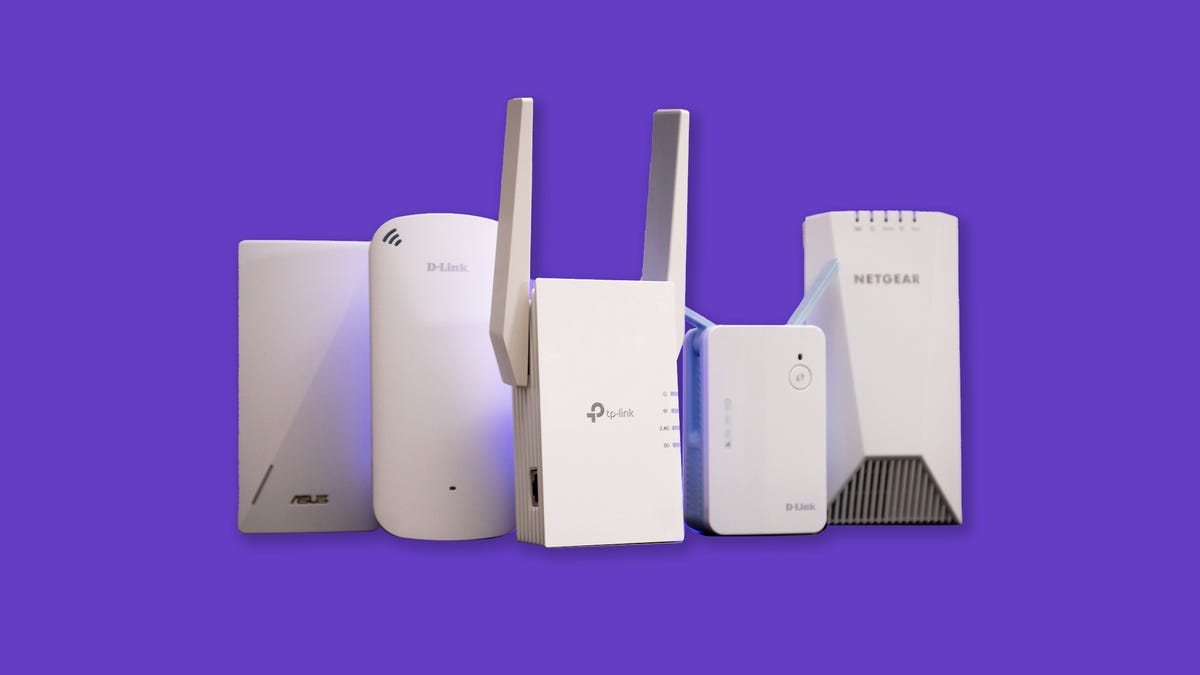Plug-in range extenders like these can help boost your speeds when you're connecting far from the router, but they can only do so much. The actual speed boost will depend on a multitude of different factors, including the layout of your home, the type of router you're using, the type of device you're trying to connect with and your internet plan's speeds. If your home's internet connection offers top speeds of 100Mbps or higher, then a decent, well-placed range extender should be able to boost your download speeds in a dead zone or when you're in range by at least 50Mbps, if not 100Mbps.
That's enough to browse the web or stream video online. Upload boosts are typically a little lower, but should still be enough to ensure that you can make a video call or upload a file to the cloud. Most range extenders will put out their own separate network -- usually the name of your original network with "_EXT" added to the end or something like that.

Having a separate network like that under the same roof as your main network could potentially cause a small amount of interference, but I haven't seen any noticeable slowdowns on my main network during any of these tests. And, in most cases, you can rename the extender's network and password to match your main network, at which point you'll have a single, seamless network that automatically passes your connection back and forth as you move throughout your home. That said, keep an eye out for client devices (phones, laptops and so on) that automatically connect to whichever network offers the best signal at the time.
If you've used a device like that on both your main network and the extender's network, then it's possible that your device will jump from one to the other without you realizing it. For instance, if your laptop is on your main network and you move a bit closer to the extender than the router, then your laptop might lose its connection and jump over to the range extender's network for the stronger signal strength, even though the speeds on that extender network might be slower. There is no functional difference between a Wi-Fi signal booster and a network extender.
Manufacturers use different terms to describe the same products, and all of these devices work the same way -- by re-broadcasting your router's signal through a wired connection (your power outlet). A Wi-Fi repeater is slightly different. It connects to your router wirelessly and re-broadcasts the signal in another room.
In most cases, no. If you're living in a larger home or if you need speeds that are reliably faster than 100Mbps at range, then it's probably worth it to go ahead and upgrade to a mesh router with its own range-extending satellite devices. You've got more options than ever these days, and just about all of them would likely outperform a stand-alone router paired with a plug-in range extender like the ones tested here.
Wi-Fi extenders are better suited for situations where you've just got a single room or maybe two where you'd like speeds to be slightly higher. They won't work miracles, but in a situation like that, they'll get the job done. The best approach is to plug the extender in somewhere close to the dead zone you're trying to fix, but not within that dead zone.
That's because you need the extender to have a decent connection with your router in order to put out a worthwhile signal of its own. To find a good spot, grab your phone or laptop, connect to your home network and run some internet speed tests in various spots that are adjacent to the dead zone in question. Once you've found a spot near the dead zone that still hits usable upload and download speeds (preferably at least 50% of whatever you're able to hit up close to the router), then you're probably in a good location.
Setting up a Wi-Fi extender is about as painless as it gets. Most models support Wi-Fi Protected Setup, or WPS, which is a universal protocol that wireless networking devices can use to connect with each other. Just plug the extender in, wait for it to boot up, press the extender's WPS button and then press the WPS button on your router within 2 minutes.
Voila, connected. Most Wi-Fi extenders cost well under $100, and our runner-up pick, the TP-Link RE605X , is priced just below that at some retailers. If you're looking for an ultra-affordable model, the TP-Link RE220 costs under $20 and outperformed almost every other extender in our initial tests.
It's a little outdated at this point -- you won't get Wi-Fi 6 support, for example -- but it still gets the job done for a very low investment..
Technology

Best Wi-Fi Extenders of 2025

Looking to improve your internet connection throughout the house? Here are our top picks for Wi-Fi extenders designed to make your home internet experience seamless.















